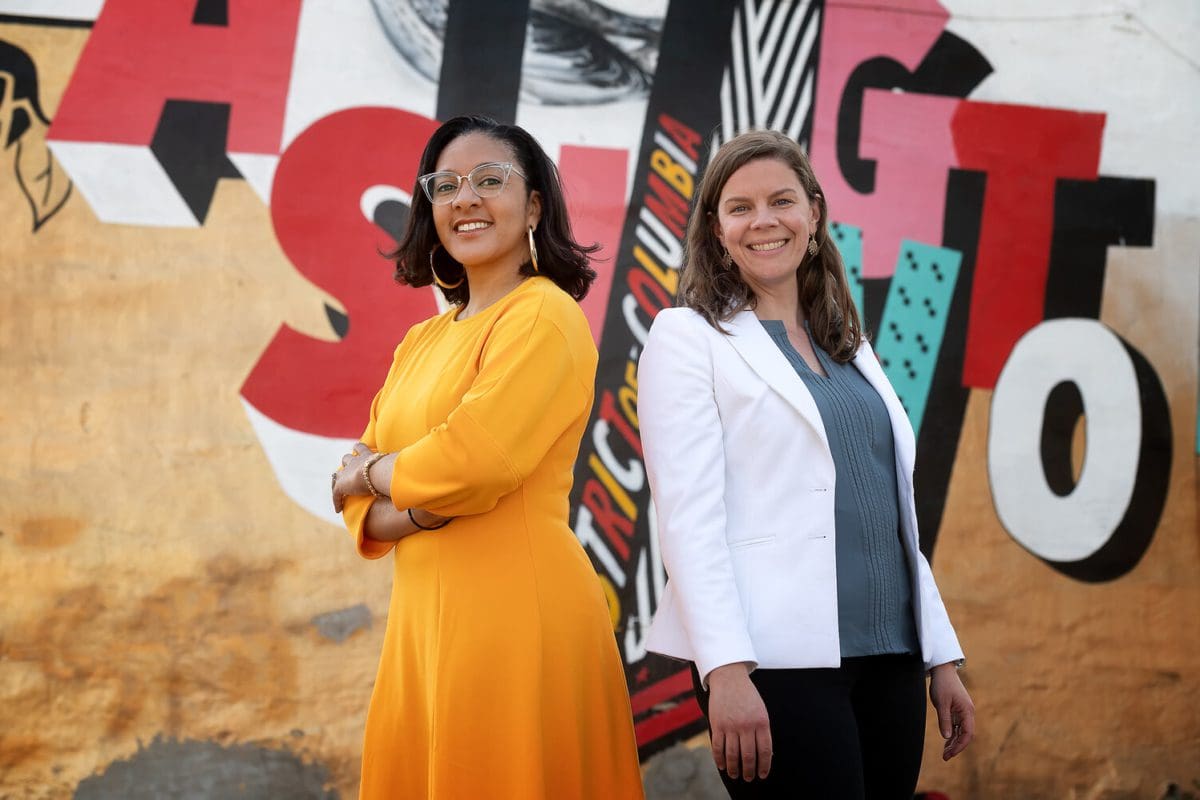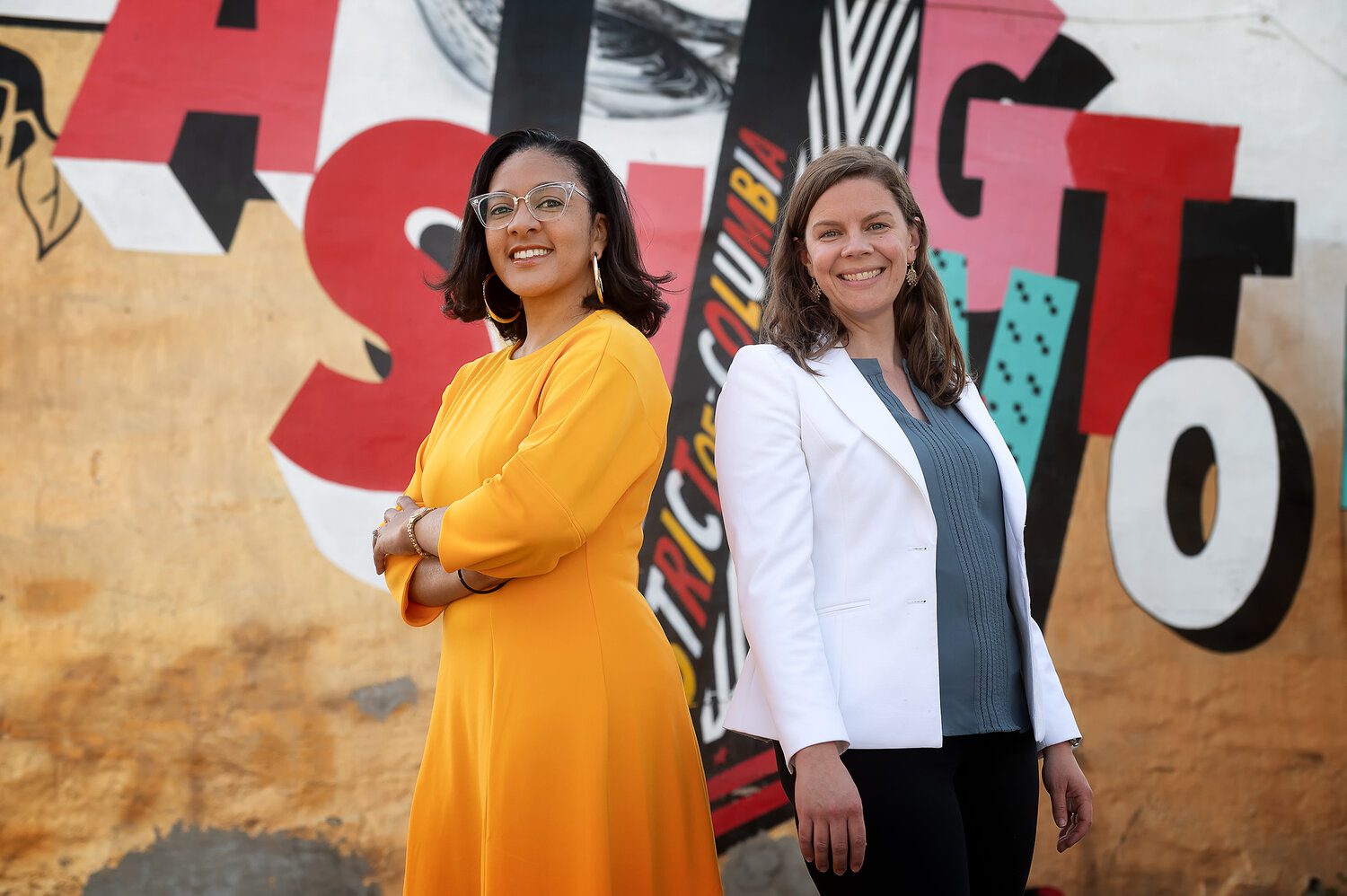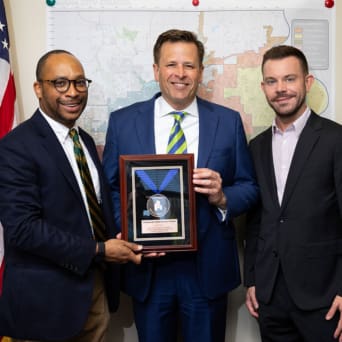In Brené Brown’s best-selling book Dare to Lead: Brave Work. Tough Conversations. Whole Hearts, she writes of leadership:
I completely underestimated the pull on my emotional bandwidth, the sheer determination it takes to stay calm under pressure, and the weight of continuous problem solving and decision-making. Oh, yeah — and the sleepless nights.
The honesty conveyed in this statement is powerful, because let’s face it — leadership is hard, and co-leadership adds another layer of complexity. That said, we’ve found that the beauty of co-leadership is not having to shoulder the emotional, mental, and programmatic toll alone.
Over the past year, and in the midst of a global pandemic, we have embarked on a personal and professional journey of humility, vulnerability, shared wins, and shared burdens. We’ve had some challenges, but our shared leadership approach has been both personally gratifying and has improved productivity across the team. As the world of work is indelibly changing and more employers are embracing shared leadership models, we want to highlight several important lessons we have learned thus far.
#1: Communication is Everything
It may be a cliché, but communication is the foundation for successful co-leadership. It requires understanding the other’s communication style (both verbal and non-verbal), active listening, checking each other’s assumptions, and being clear about how decisions are made. Not only does this allow us to be accountable to each other, but it also forces us to be transparent with our staff about how we are reaching decisions.
#2: Make Space
We each have a discrete leadership style, a superpower of sorts. However, it is imperative that we make space for the other to fully inhabit her wholeness and unique strengths, especially when those things differ from our own. The beautiful upside of making space for the other is that we realize that we are truly better together — and that the unit is more complete and more effective than the two individuals.
A good example of this is how we approach leading our staff. Katrina embraces a democratic leadership style. She sees each of our team member’s individual strengths and seeks their input before final decisions are made. She listens deeply to staff and encourages those she works with to think through a solution that works for them as an individual, but also with an eye toward the impact on the team.
Catherine, on the other hand, is a more authoritative leader who maps the way and sets expectations, while taking time to explain her thinking. She looks for specific opportunities for individuals to add their voice to the chorus of the larger team. Despite different approaches, we share a common goal of ensuring that our team sees themselves reflected in the broader work. It is because of this commonality that instead of viewing our distinctive approaches and strengths as competition, we try to recognize when one approach is more appropriate than another. This allows us to collectively use our management styles to try and help our staff do their absolute best work.
#3: Co-Create
Co-creation stimulates creativity, promotes a sense of shared ownership and excitement, and helps to foster trust. It also pushes us outside of our comfort zones, and mandates that we try to see things from each other’s perspective.
#4: Recognize Power
Catherine’s expertise is in public health, and Katrina’s is in government affairs. In our work to advance public health policies in cities across the country, these complementary strengths help us maximize our effectiveness. In shared leadership, it is critical to recognize that power in another does not diminish our own individual power. We have learned that in delighting in each other’s strengths, we actually burnish our shared credibility, enabling us to celebrate each other’s successes as wins for both the project and for ourselves as a collective unit.
#5: Embrace Differences
The power of co-leadership lies in the full embrace of different lived experiences and perspectives. We have learned that calling out our differences has enabled us to more fully understand each other’s viewpoints and perceptions. In truth, we are still working on this. But by being up front about our different biases, our different backgrounds, and our different standpoints, we are starting to meld our two unique vantage points.
One area where we have committed ourselves fully is discussing and dissecting the ways in which race shows up in our personal and professional spaces. Given that one of us is a Black woman and one a white woman, we have very different experiences in both our past and present that impact that ways in which we lead and navigate the world. Calling this out has often been hard and uncomfortable. But this work is a necessity, and through it we are gaining a greater perspective and moving closer to a deeper understanding of how we show up for ourselves and each other.
Ultimately our diversity of perspective, lived experience, and insight helps to foster shared learning, encourages collaboration, and invites thoughtful discussion not only between us, but across our team, helping to strengthen the initiative and make us a more dynamic team.
#6 Build Inner Self-Confidence
Co-leading is like riding a tandem bike: If things get even a little unbalanced, it can all go astray. A significant part of co-leadership is having the confidence in and trusting your co-leader to deliver, while also not feeling threatened by the other’s leadership.
If we are honest, this has taken a lot more time. Insecurity is a struggle for many in the workplace, and we’ve had to gain security in who we are and what we know. At times, we have worried that the other was more visible in the organization or seen as leading solely.

Co-leadership is not easy. This first year has taken a lot of effort, extra communication, and opening ourselves up to each other in ways that are rare in the workplace. However, the benefits far outweigh the challenges, and we believe in modeling innovative leadership that is appropriate for the challenges of today’s world.
Co-leadership is a natural extension of our cross-sectoral work. The only way to navigate and ultimately overcome the challenges American cities face is through strong collaboration and coordination among diverse stakeholders. The CityHealth model is inherently collaborative, and the cross-sector nature of our work is unique, marrying the worlds of practical policymaking, public health, government relations, and academic research.
The change we hope to effectuate in the world starts with us, and we are ready to roll up our sleeves, put our brains together, and develop solutions that contribute to the vibrancy, rich diversity, and overall health of our nation’s urban centers. This is the promise and opportunity presented by the co-leadership model, and we look forward to continuing the work.



 Katrina Forrest, JD, is Co-Executive Director of CityHealth. Learn more about Katrina
Katrina Forrest, JD, is Co-Executive Director of CityHealth. Learn more about Katrina  Catherine Patterson, MPP, is Co-Executive Director of CityHealth. Learn more about Catherine
Catherine Patterson, MPP, is Co-Executive Director of CityHealth. Learn more about Catherine 

